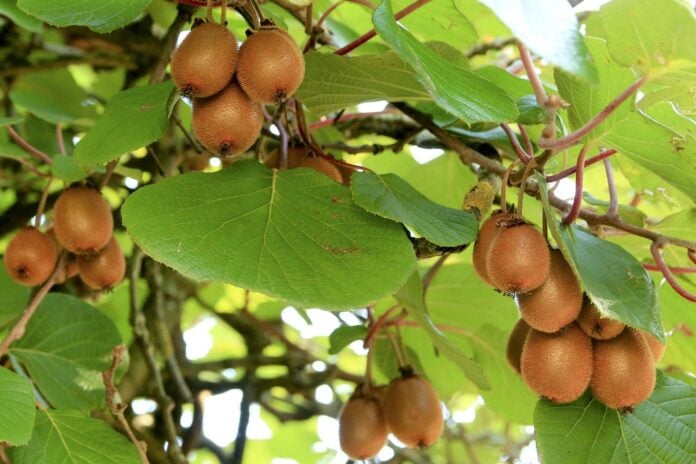Groupe Berkem, a leading player in plant-based chemistry, announces that its subsidiary Berkem, a French specialist in plant extraction, is launching a new active ingredient, Ki'Leaft. Ki'Leaft is a cosmos-certified 100% kiwifruit leaf extract of natural origin, upcycled and produced locally close to the Berkem Group's extraction plant in the Dordogne. Ki'Leaft meets market needs with its antioxidant, firming and regenerating properties, and its ability to strengthen the skin's barrier function.
The result of 10 years of Research & Development
As an industrial expert in plant chemistry, the Berkem Group has developed and tested the capabilities of kiwifruit leaf extract. After 10 years of R&D, various studies have revealed the properties of Ki'Leaft, an active ingredient rich in sugars and containing polyphenols*.
It has been clinically proven that Ki'Leaft offers an immediate tightening effect, helps regenerate the skin, reinforces its barrier function and structure, and has a high antioxidant capacity. Ki'Leaft meets the expectations of the cosmetics market by offering benefits for the facial care market (serum, facial care...), which is growing by 10% worldwide every year since 2020 (source Mintel GNPD - The Future of Facial Skincare, 2022).
| Kiwifruit - a little history : Actinidia chinensis is the name given by French botanist Jules Emiles Planchon in 1847, derived from the Greek aktis meaning little spoke, in reference to the female flowers unfolding like the spokes of a bicycle wheel. Native to China, where it has been enjoyed for over 2,000 years, this liana fruit, growing along the great Yangtze River, was known as Yang Tao, the Yang peach. Introduced to Europe in the mid-18th century, it was then known only as an ornamental plant, and became acclimatized in European botanical gardens during the 19th century. Cultivated in New Zealand in the early 20th century, the land of its first successes gave it the name Kiwi, just like its emblematic bird, which is small, brown and hairy. Today grown and consumed throughout the world, it is appreciated for its taste, and its rich antioxidant content makes it the health ally par excellence. In France, the 1st commercial harvest took place in 1972, and the South West - the region with the best climate, soil and sunshine - now accounts for three quarters of national production. |
An illustration of upcycling in support of research
The Nouvelle-Aquitaine region accounts for 75% of national kiwifruit production (45,245 tonnes of kiwifruit were produced in France in 2021 - source Agreste), and the vast majority of the fruit's leaves are discarded at harvest time. With this in mind, researchers at Berkem, specialists in plant extraction based in the Dordogne (Gardonne) close to kiwifruit farms, investigated, tested and validated the effectiveness of the active ingredient to address the cosmetics market. The Berkem Group uses kiwifruit leaves 100% of natural origin, grown under controlled conditions and certified organic.
" With 30 years' experience in plant extraction, the Berkem Group, integrator of plant chemistry, is constantly seeking to be a forerunner in the development of innovative solutions, particularly in the fields of health, beauty and nutrition. The development of this new upcycling-derived active ingredient, with its remarkable properties, meets the needs of our customers - both professionals and major brands - in the cosmetics industry, while at the same time illustrating our Group's CSR strategy. "says Charlène Martin, Marketing Manager, Berkem Group.




